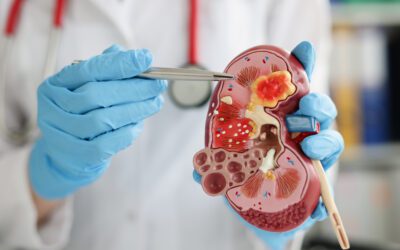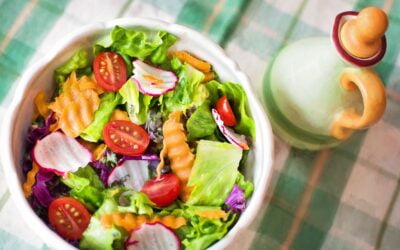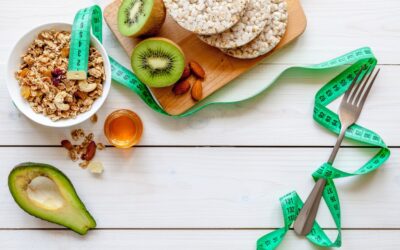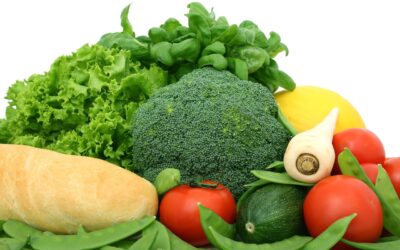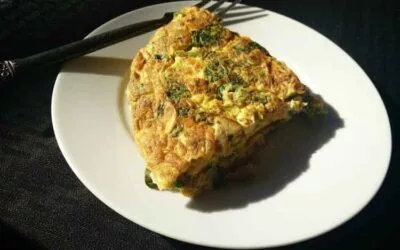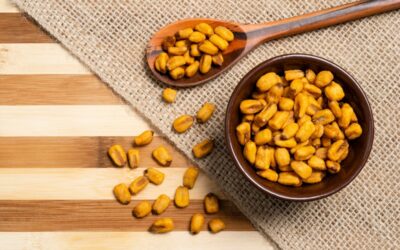Creating a healthy renal diet plan is critical for those with chronic kidney disease. Eating a healthy diet is important for maintaining good health and for helping to manage the symptoms of kidney disease. Having a renal diet plan that includes a variety of foods that are high in nutrients and low in sodium, phosphorus, and potassium can help reduce the strain on the kidneys. This article will provide breakfast, lunch, and dinner ideas for creating a healthy renal diet plan.
What is Renal Diet?
A renal diet is a diet specifically designed for people with kidney disease or kidney damage. The diet focuses on limiting the intake of certain foods and nutrients that can worsen kidney function, such as sodium, potassium, and phosphorus.

It also emphasizes the consumption of foods that are beneficial for kidney health, such as fruits, vegetables, and low-protein sources of protein.
Who can follow renal diet?
People with chronic kidney disease, kidney failure, or those who are at risk of developing kidney disease may benefit from following a renal diet. This includes people with diabetes, high blood pressure, or a family history of kidney disease.
What is the Purpose of renal diet?
The purpose of a renal diet is to reduce the amount of waste that builds up in the body and limit the amount of fluid and certain minerals such as potassium, phosphorus, and sodium that are taken in. A renal diet is most often recommended for those with chronic kidney disease (CKD) and is designed to help preserve kidney function and slow the progression of CKD. It also helps to reduce the risk of complications associated with CKD, such as high blood pressure and heart disease.
7 benefits of Renal Diet.
1. Reduced Fluid Retention.
A renal diet can help reduce fluid retention, which is especially beneficial for those with kidney failure or other renal issues. This can help reduce swelling in the legs and feet, as well as other parts of the body.
2. Reduced Sodium Intake.
Many people with kidney disease need to reduce their sodium intake, and a renal diet can help. Eating a renal diet can help you meet the recommended daily sodium limit of 2,000 milligrams.
3. Controlled Potassium Intake.
A renal diet can also help you maintain a healthy potassium level. Too much potassium can cause serious health problems, so it’s important to eat foods that are low in potassium.
4. Controlled Protein Intake.
Protein is important for health, but too much can put strain on the kidneys. A renal diet can help you get the right amount of protein for your body, without putting too much strain on the kidneys.
5. Reduced Phosphorus Intake.
Phosphorus is a mineral that can be dangerous in high levels. A renal diet can help you maintain a healthy phosphorus level by limiting foods high in phosphorus and eating foods that are low in phosphorus.
6. Limited Alcohol Consumption.
Alcohol can be hard on the kidneys, so a renal diet can help you limit your alcohol consumption.
7. Balanced Nutrients.
A renal diet can help you get all the essential vitamins and minerals your body needs, without overloading your kidneys. This can help keep your body healthy and functioning properly.
5 Renal diet recipes.
1. Baked Fish with Tomatoes and Capers.
Ingredients.
- 4 (4-ounce) fillets of white fish, such as cod, haddock, or tilapia.
- 1/2 teaspoon salt.
- 1/4 teaspoon black pepper.
- 1 tablespoon olive oil.
- 2 cloves garlic, minced.
- 1/4 cup capers.
- 1 cup diced tomatoes.
- 1 tablespoon fresh lemon juice.
- 2 tablespoons fresh parsley, chopped.
Instructions.
1. Preheat oven to 375°F.
2. Place fillets on a foil-lined baking sheet. Sprinkle with salt and pepper.
3. Heat oil in a small skillet over medium heat. Add garlic and cook until fragrant, about 30 seconds.
4. Add capers and tomatoes to the skillet and cook for another minute.
5. Remove skillet from heat and stir in lemon juice and parsley.
6. Pour caper and tomato mixture over the fish. Bake until fish is cooked through, about 12-15 minutes.
2. Zucchini and Mushroom Frittata.
Ingredients.
- 2 tablespoons olive oil.
- 1 cup mushrooms, sliced.
- 1 cup zucchini, diced.
- 3 cloves garlic, minced.
- 6 large eggs.
- 1/4 teaspoon salt.
- 1/4 teaspoon black pepper.
Instructions.
1. Preheat oven to 375°F.
2. Heat oil in a large oven-proof skillet over medium heat. Add mushrooms, zucchini, and garlic and cook until vegetables are softened, about 5 minutes.
3. In a medium bowl, whisk together eggs, salt, and pepper.
4. Pour egg mixture into the skillet and stir to combine.
5. Cook over medium heat until eggs begin to set, about 4 minutes.
6. Transfer skillet to oven and bake until frittata is golden and cooked through, about 20 minutes.
3. Cauliflower and Chickpea Salad.
Ingredients.
- 1 head cauliflower, cut into florets.
- 1 (15-ounce) can chickpeas, drained and rinsed.
- 2 tablespoons olive oil.
- 1 teaspoon cumin.
- 1 teaspoon garlic powder.
- 1/2 teaspoon paprika.
- 1/4 teaspoon salt.
- 1/4 teaspoon black pepper.
- 1/4 cup fresh parsley, chopped.
Instructions.
1. Preheat oven to 400°F.
2. Place cauliflower and chickpeas on a baking sheet. Drizzle with olive oil and sprinkle with cumin, garlic powder, paprika, salt, and pepper. Toss to coat.
3. Bake for 20 minutes, stirring halfway through.
4. Remove from oven and transfer to a large bowl. Add parsley and stir to combine.
4. Baked Asparagus.
Ingredients.
- 1 bunch asparagus, trimmed.
- 1 tablespoon olive oil.
- 1/2 teaspoon salt.
- 1/4 teaspoon black pepper.
Instructions.
1. Preheat oven to 425°F.
2. Place asparagus on a baking sheet and drizzle with olive oil. Sprinkle with salt and pepper.
3. Bake for 12-15 minutes, stirring halfway through, until asparagus is tender.
5. Lentil Soup.
Ingredients.
- 2 tablespoons olive oil.
- 1 onion, diced.
- 2 cloves garlic, minced.
- 2 carrots, diced.
- 2 celery stalks, diced.
- 2 teaspoons dried oregano.
- 1 teaspoon dried thyme.
- 1 teaspoon salt.
- 1/4 teaspoon black pepper.
- 1 (14.5-ounce) can diced tomatoes, with juice.
- 4 cups vegetable broth.
- 1 cup dried lentils.
Instructions.
1. Heat oil in a large pot over medium heat. Add onion, garlic, carrots, and celery and cook until vegetables are softened, about 8 minutes.
2. Add oregano, thyme, salt, and pepper and cook for another minute.
3. Add tomatoes, broth, and lentils and bring to a boil.
4. Reduce heat to low and simmer for 25 minutes, or until lentils are tender.
5. Serve warm.
7 Days Healthy Renal Diet Plan: Breakfast, Lunch, and Dinner Ideas.
Day 1.
Breakfast: Oatmeal with berries.
Mid-morning: Apple and Almonds.
Lunch: Grilled Salmon with Quinoa and Asparagus.
Snack: Greek Yogurt with Blueberries.
Dinner: Baked Tilapia with Spinach and Brown Rice.
Day 2.
Breakfast: Avocado Toast and Eggs.
Mid-morning: Cottage Cheese and Carrots.
Lunch: Turkey and Hummus Wrap.
Snack: Celery and Peanut Butter.
Dinner: Lentil Soup.
Day 3.
Breakfast: Banana Smoothie.
Mid-morning: Walnuts and Raisins.
Lunch: Grilled Chicken Salad.
Snack: Celery and Hummus.
Dinner: Baked Halibut with Broccoli.
Day 4.
Breakfast: Whole Wheat Toast with Peanut Butter.
Mid-morning: Apple Slices and Almonds.
Lunch: Baked Sweet Potato with Veggies.
Snack: Greek Yogurt with Berries.
Dinner: Grilled Salmon with Quinoa and Asparagus.
Day 5.
Breakfast: Omelette with Spinach and Mushrooms.
Mid-morning: Cucumber and Hummus.
Lunch: Grilled Chicken with Broccoli and Brown Rice.
Snack: Carrots and Peanut Butter.
Dinner: Lentil Soup.
Day 6.
Breakfast: Oatmeal with Berries.
Mid-morning: Celery and Almonds.
Lunch: Baked Tilapia with Spinach and Quinoa.
Snack: Apple and Cottage Cheese.
Dinner: Grilled Vegetable Wrap.
Day 7.
Breakfast: Avocado Toast and Eggs.
Mid-morning: Walnuts and Raisins.
Lunch: Baked Sweet Potato with Veggies.
Snack: Greek Yogurt with Blueberries.
Dinner: Baked Halibut with Broccoli.
Frequently Asked Questions.
The recommended daily sodium intake for individuals on a renal diet is typically 1,500-2,000 milligrams.
A renal diet typically limits phosphorus intake to 800-1,000 mg per day.
A renal diet restricts the intake of certain foods that are high in sodium, potassium, and phosphorus. These include processed and packaged foods, high-sodium condiments, processed meats, canned soups, and high-potassium fruits and vegetables such as oranges, bananas, and potatoes. Dairy products and proteins that are high in phosphorus, such as organ meats, are also not allowed on a renal diet.
Bottom Line.
Overall, the renal diet plan for breakfast, lunch, and dinner is a great way to eat healthy and still enjoy meals. It focuses on providing nutritionally balanced meals that are low in sodium, potassium, and phosphorus which are important in keeping the kidneys healthy.
Eating a renal diet plan also helps control blood pressure and cholesterol levels, which can help reduce the risk of kidney disease. With this meal plan, individuals can enjoy meals that are flavorful and enjoyable while still taking care of their kidneys.

 Workout
Workout
 Meditation
Meditation


 Stories
Stories


 Podcast
Podcast E-book
E-book

